
All your brake parts work together to perform one important and crucial function, safe and precise stopping power. San Clemente Auto Center understands how important brakes are. Our ASE-certified technicians will let you know which components need immediate attention and which ones can wait. And they’ll discuss brake repair options that fit within your budget.
It’s time to have your brakes inspected at San Clemente Auto Center. From the brake pedal to hydraulic brake fluid, brake master cylinder to power brake booster, drum brakes to disc brakes and electronic anti-lock brake sensors, Paul`s Auto Repair technicians know every part of your brake system inside and out and can perform brake repair on any make and model.
Your vehicle’s brake system has one job – to stop your vehicle. But it takes several key components to deliver that singular end result. To bring a vehicle to a halt, three things are necessary: leverage, hydraulic force and friction. Leverage is supplied by the driver’s leg pressure and the brake pedal. The pedal is connected by levers and rods to the back of the power booster. The power booster uses either engine vacuum or a hydraulic pump to multiply and transfer the force of that leverage to the master cylinder. The master cylinder is the heart of your vehicle’s brake hydraulic system. It uses applied leverage to force a reservoir full of brake fluid through valves, steel lines and rubber hoses into hydraulic calipers and wheel cylinders. That hydraulic pressure is then used to help create friction. For example, disc brakes use a hydraulic caliper fitted with brake pads to grab a spinning disc (or rotor). Drum brakes, on the other hand, have a hydraulic wheel cylinder that pushes a brake shoe against the inside of a spinning drum. Either design involves highly engineered parts and precise movement. The more force a driver applies to the brake pedal, the greater the stopping force that is applied at the wheels. In addition to this primary braking system, most of today’s vehicles utilize an electronic Anti-lock Brake System. Using electronic sensors and high pressure pumps, under certain conditions, your ABS system can measure vehicle speed, wheel slip and brake force. Then it actually pumps the brakes for you during an emergency stop. That’s why it’s essential to be proactive about testing overall brake components. And to know whether a brake component needs simply to be serviced or totally replaced.
The only thing better than a car that goes is a car that stops. Which is why we offer free brake inspections. Routine inspections keep your vehicle stopping safer, longer. How often you have to change your brakes depends on a lot of things: driving conditions, rotor thickness, quality of brake pads, and more. A routine brake inspection with every other oil change makes certain that your braking system is safe. If you wait too long between services, you might have to get your brake rotors machined or even replaced, which gets expensive. So stop in for routine brake check-ups before you can’t stop anymore.
Thorough, comprehensive, extensive, and methodical are just a few characteristics that describe our brake inspections. When we say brake inspection, we not only mean it, but we demonstrate it on every automobile we service. Because in order to detect a problem, we need technicians that not only can spot potential problems, but also have the know-how and precision to regain brake awesomeness. When we’re finished, you’ll have total confidence knowing your ride has received a brake inspection that’s hard to match.
BRAKE INSPECTION INCLUDES CHECKING YOUR BRAKE:
- Pads (and/or shoes)
- Calipers
- Rotors (and/or drums)
- Wheel cylinders
- Hardware (springs and adjusters)
- Hoses
- Parking brake cables
- Fluid condition
- Wheel bearings and grease seals
- Master cylinder fluid exchange
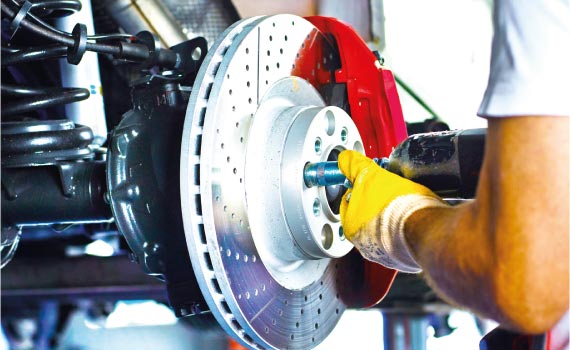
Brake Inspection
Brakes use friction to bring a vehicle to a complete stop. This friction creates a substantial amount of heat…
Approx. Time: 30 Minutes
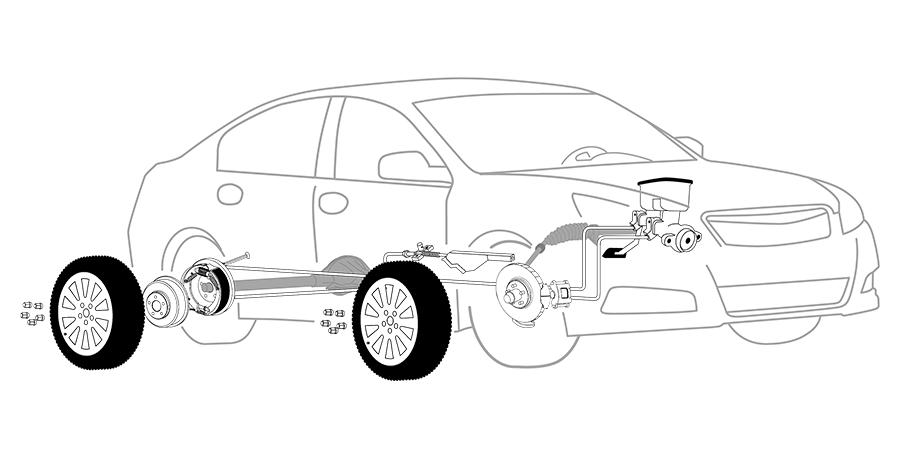
Brake Rotor Replacement
Your brake system’s rotors, in conjunction with the brake pads, help bring your vehicle to a complete stop…
Approx. Time: 60 Minutes
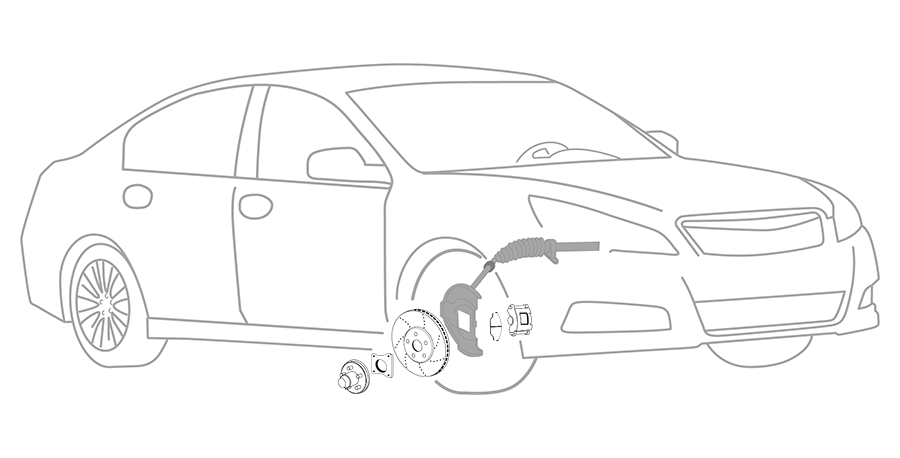
Front Disc Brake Repair
In the brake systems of modern vehicles, disc brakes are used in both the front and rear of the vehicle…
Approx. Time: 120 Minutes
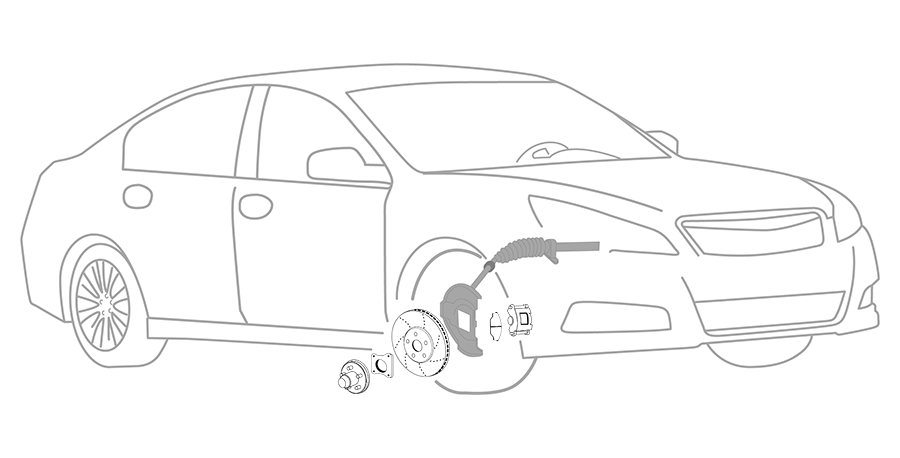
Parking Brake Adjustment
Whether you have a disc brake system or a drum brake system, you have a parking brake that is responsible for locking your vehicle…
Approx. Time: 30 Minutes
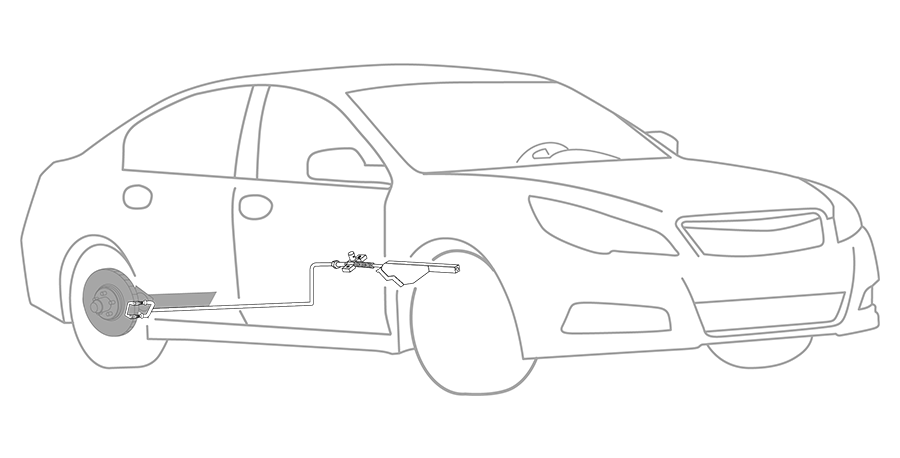
Rear Disc Brake Repair
Some brake systems use disc brakes in the rear of a vehicle. Most rear disc brake systems contain brake pads, calipers, rotors…
Approx. Time: 120 Minutes
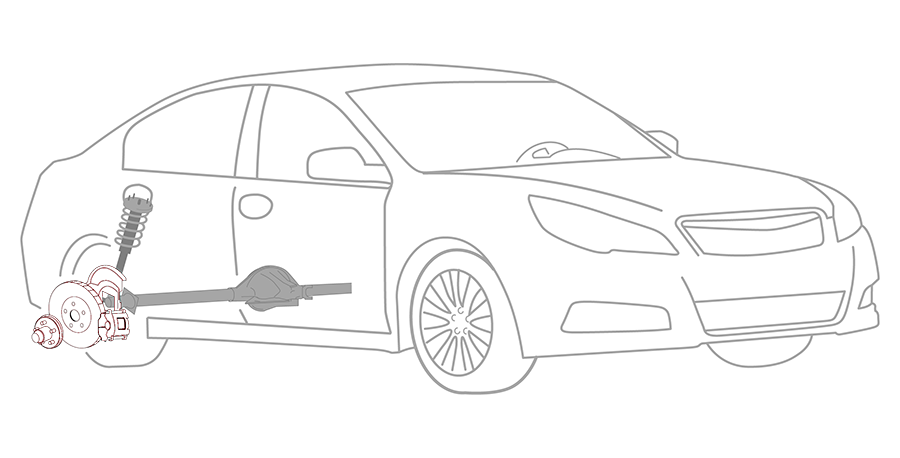
Rear Drum Brake Repair
Some brake systems use rear drum brakes instead of rear disc brakes. Drum brake components consist of brake drums…
Approx. Time: 120 Minutes
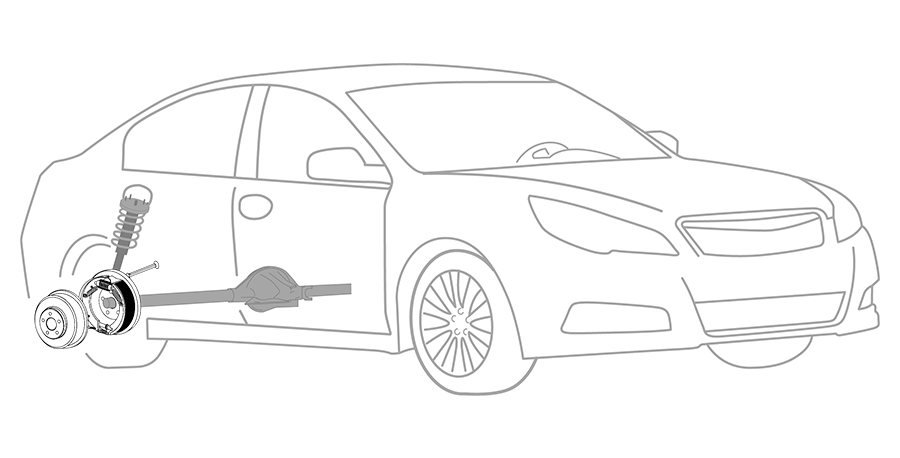
A yearly checkup will not only give you the confidence and guidance of our expert technicians, it will also provide you with the best opportunity to spot the necessary smaller repairs to avoid the bigger and more expensive ones. If you’re experiencing any warning symptoms, then a more immediate inspection may be required. Consult your owner’s manual for specific brake inspection intervals for your particular make and model.
BRAKE PAD
Brake pads are the parts that contact your rotors and cause friction in order to stop your car.
BRAKE ROTOR
The rotor is directly connected to each tire. To stop your car, the rotor must stop spinning. It stops spinning by friction created by the brake pad.
BRAKE CALIPER
The caliper applies pressure and activates brake pads so the pads create contact with the rotors. The caliper requires brake fluid in order to function properly.
BRAKE HOSE
When you press down on your brake pedal, brake fluid travels through the brake hose to each caliper, which puts the brake pads into action.
BRAKE FLUID
Brake fluid is a crucial element needed to make your brakes operate successfully. When pressure is generated in the brake fluid lines, energy is distributed to your brake parts so they can perform their main job — stopping your car. If you have a brake fluid leak, your car could take longer to stop or, worse, won’t stop at all. If your vehicle has no brake fluid, you’re brakes won’t even operate. And that’s a scary situation we’d never wish on anybody.
BRAKE WARNING SIGNS, BRAKE PROBLEM SYMPTOMS
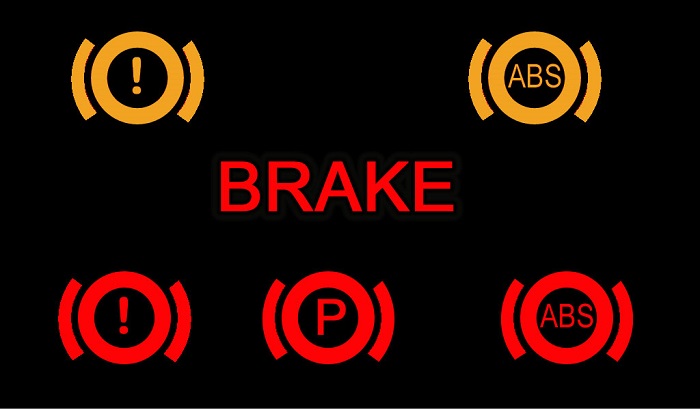
You know you need brake repair when:
– the brake dashboard light glows amber, indicating problems with the anti-lock brake system (ABS)
– the brake dashboard light is red, indicating a system imbalance
– the brake pedal is spongy or slow to respond
– you hear grinding or constant squealing during braking
Any time you notice these or other symptoms, it’s a good idea to have your brakes checked. At San Clemente Auto Center, if our inspection reveals you do need brake repair service, we will explain exactly what’s required, what’s optional and provide you with a written estimate before any work is done.
– When your car starts creating abnormal sounds, feelings or smells, start investigating the issue sooner rather than letting the condition worsen. Waiting will only lead to more expensive parts wearing out and requiring replacement. For example, rotors start to warp and become damaged when completely worn brake pads and shoes exceed their lifespan, shortening the life of healthy parts due to the metal on metal grinding that occurs. Screeching, grinding, squealing, rubbing and other eardrum piercing noises are common indicators that your brake pads & shoes require inspection. This should be addressed before worn pads cause damage to other parts, which could result in more expensive repairs.
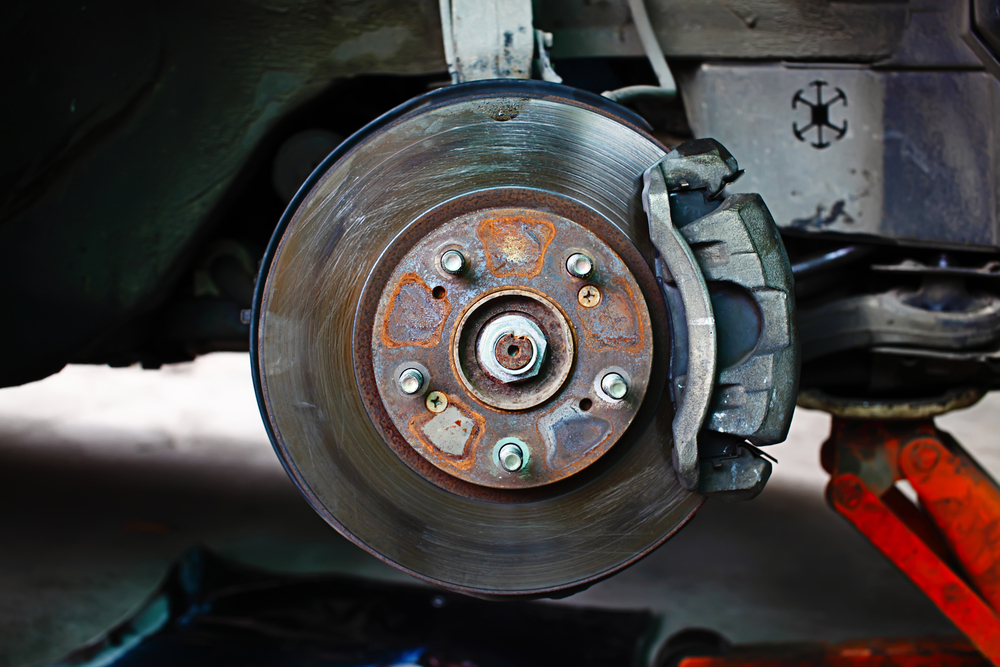
– Vibration and pulsation in the pedal or your steering wheel. If this is a familiar feeling, your brake system is telling you something. Wait any longer, and your rotors might get warped from the metal on metal rubbing, potentially costing you a lot more in repair. Stop in as soon as possible if you are experiencing this unpleasant problem.
– Pressing down farther to complete braking functions. This symptom is not as prevalent as it used to be, but if you’re pressing down farther than usual on your brake pedal to stop your car, requiring more pressure and time to perform the same stopping function, you have entered the first stage and sign of brake pad wear. Don’t play around with your brake pedal, you can only press so far before you’re in a frightening, “I have no brakes” predicament.
– That pungent burning smell near your tires is screaming “help!” If you’re detecting noxious odors emitting from your tires, stop what you’re doing and please call or visit San Clemente Auto Center. Unfamiliar and pungent smells, such as what you’re experiencing, are not normal and could have dangerous consequences if you continue to drive under these unsafe conditions. Your best solution is our brake inspection to see what part of your braking system has been compromised while driving with this smelly symptom.
– Brake warning light. If your brake warning light comes on visit us as soon as possible and ask us to perform a free brake inspection.
– The Pulling Effect: If your car pulls to the left or right when applying your brakes, this may indicate your brakes or suspension are functioning poorly and are in need of inspection.
DO
Do… reduce the stop and go grind. The more city driving, the more stop and go, the quicker the brakes wear down. Simple as that. This type of driving can wear brake pads down faster, which can warp rotors more quickly. If you constantly drive like this, take your car in for at least one brake inspection a year to check for problems.
Do… cruise with the pace of traffic. Obeying speed limits with conservative driving pays off by preserving the life of your brake parts. So don’t tailgate, leave enough room to decelerate and you’ll be all set. Doing so will generate less heat, friction and wear. It’s a win-win for both the pads and the rotors.
Do… empty your trunk of any heavy junk. Overloading your vehicle with things you don’t need — such as that heavy portable grill — can greatly impact brake life due to the extra weight you’re adding to your vehicle. Take stock of what’s in your trunk. Remove what you don’t need. This should improve your stopping power and eliminate the added stress and weight you’re placing on your rotors and other braking parts.
DO NOT
Do not… join the Brake Riders Brigade. Know someone with their foot riding the brake, even when no braking is necessary? Don’t we all. Riding your brake is the sure-fire way to wear your pads and warp your rotors from the excessive heat generated, especially at high speeds.
Do not… champion your aggressive habits. Aggressive driving leads to last minute braking. The result? Excessive heat cooking your rotors. Continue driving this way and you’ll continue to pay more for the brake damage that ensues. Think about how you can avoid this driving scenario and you just might save more than just your brakes.
LIFE EXPECTANCY
Life expectancy is universal in all walks of life. Just as health and habits can affect the length of your own life, driving habits will determine the life expectancy of your brake parts. The hard parts are built for endurance: Rotors and calipers can last for years if you follow the recommended maintenance. But beware: letting your brake pads wear down completely will only damage your rotors more quickly and lead to more expensive repairs. Time is on your side. Calipers are usually designed for the long haul, but their biggest enemies are heat and corrosion. Improper maintenance can create caliper corrosion and leaks caused by constant stop and go, worn pads and metal on metal grinding. Road salt and weather can lead to corrosion as well. So schedule an annual brake inspection, and we’ll provide a clearer picture on their current condition. See your vehicle’s owner’s manual for recommended maintenance. It’s all a balancing act. If your suspension system’s shocks and struts are off balance, you’ve probably noticed a significant shift in your ride’s weight distribution. You’ll be able to gauge this if you can feel the front end nose dive after you brake. The distance it takes to stop is also longer, causing your front brakes to wear out faster.
BRAKE SERVICE AT SAN CLEMENTE AUTO CENTER
In addition to our most commonly performed brake services, we also provide these services needed for the best stopping power:
Brake Fluid exchange — removes air and brake fluid contaminants
Replacement and installation brake hardware, rotors, wheel bearings, calipers, brake hoses, drums and master cylinders
Resurfacing of drums and rotors
Cleaning and adjusting drum brakes and parking brakes
Repacking wheel bearings — necessary for keeping bearings lubricated
Anti-lock Braking System Diagnostics and Repair
Our FREE BRAKE INSPECTION is as thorough as the day is long. Just ask for it and you shall receive. Our techs can detect most any brake problem, big or small, by inspecting your ride’s different brake components. Our brake technicians are ASE certified, this ensures you have a knowledgeable and professional brake technician working on your vehicle. ASE is the automotive industry standard with a trusted certification process. Before any brake technician can even become ASE brake certified, they’re required to have two years of automotive experience. ASE exam is a rigorous test and the standard way to accurately measure the competency and knowledge of the technician seeking certification. Now the next time you see the ASE patch on one of our tech’s uniform, you’ll know you have a qualified person at the helm. Certification is not for life. To remain certified, ASE specialists must be retested every five years.
